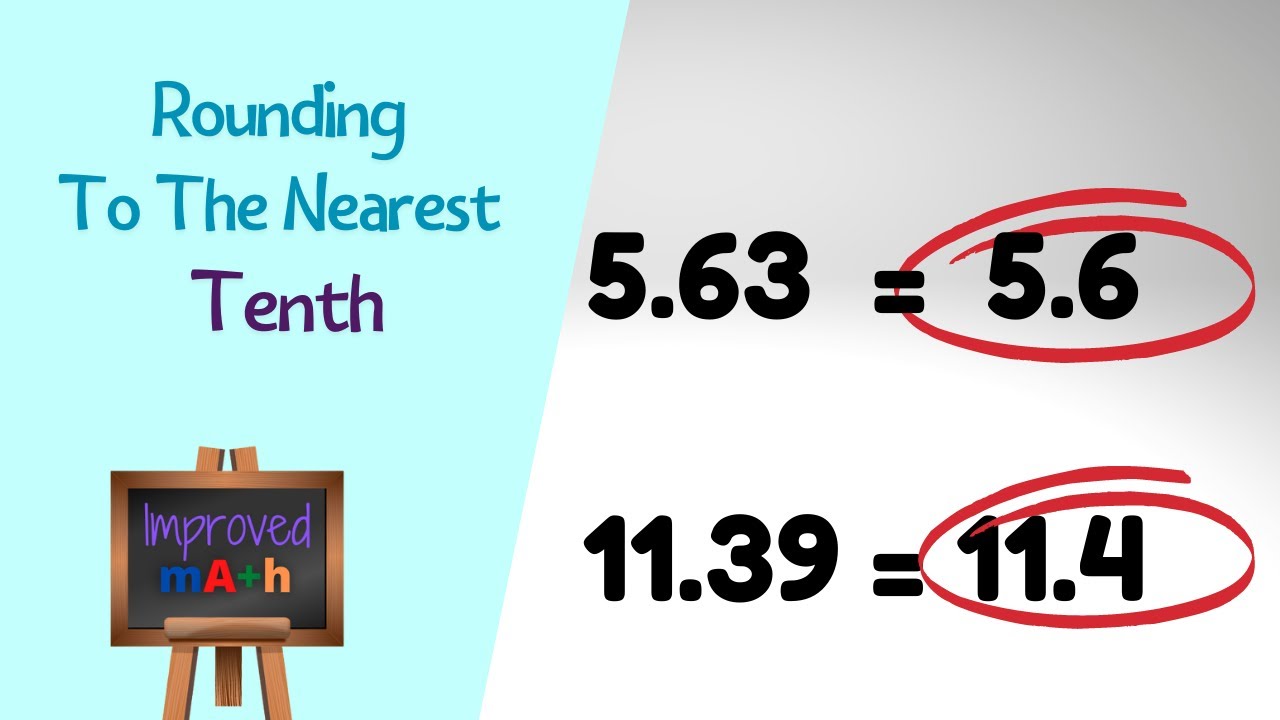Understanding rounding is crucial for number sense. It’s a foundational skill applicable across many mathematical concepts. Students need a solid grasp of this concept.
Rounding 143 to the Nearest Ten
Let's consider the number 143. We want to round this number to the nearest ten. The goal is to find the closest multiple of ten.
Identify the tens place. In 143, the 4 is in the tens place, representing 40. The digit to the right of the tens place, 3, is important. This is the deciding digit.
If the deciding digit is 5 or greater, we round up. If it is 4 or less, we round down. Since 3 is less than 5, we round down.
Therefore, 143 rounded to the nearest ten is 140. The 3 in the ones place is replaced by a 0. The tens digit remains the same.
Tips for Explaining Rounding in Class
Start with a number line. Visual aids are incredibly helpful. Draw a number line showing multiples of ten (e.g., 130, 140, 150).
Plot 143 on the number line. Students can visually see whether it's closer to 140 or 150. This makes the concept more intuitive.
Use real-world examples. Discuss situations where rounding is used. Estimating grocery bills or travel times are relatable examples.
Employ the "midpoint" strategy. Emphasize that if a number falls exactly halfway, we typically round up. This reinforces the rule.
Practice with various numbers. Don't just stick to three-digit numbers. Use two-digit, four-digit, and even decimals later on. Variety helps solidify understanding.
Break down the steps clearly. Emphasize identifying the place value to round to. Highlighting the deciding digit is also crucial. Then follow the rule (5 or more, round up; less than 5, round down).
Common Misconceptions
Students often confuse rounding up and rounding down. They may think that any number with a digit greater than 5 *must* be rounded up, regardless of place value. Address this directly.
Another misconception is neglecting to change the digits to the right of the rounded place. For example, when rounding to the hundreds place, students may forget to make the tens and ones digits zero. Repeatedly remind students of the 'placeholder zeros'.
Sometimes students apply the rounding rule to all digits. They might round each individual digit instead of the overall number based on the deciding digit. Clarify that only the relevant digit is adjusted, and trailing digits become zero.
Rounding down does *not* mean decreasing the number. It means finding the nearest lower multiple of the specified place value. Emphasize that you are finding the *closest* multiple, not necessarily making the number smaller.
Engaging Activities
Play "Rounding Bingo". Call out numbers and specify the place value to round to. Students mark the rounded numbers on their bingo cards. This makes practice fun and competitive.
Use estimation jars. Fill a jar with objects (e.g., marbles, candies). Have students estimate the quantity and round their estimates to the nearest ten or hundred. Compare the rounded estimates to the actual count. This connects rounding to estimation skills.
Create rounding riddles. For example: "I am a number between 150 and 160. When rounded to the nearest ten, I am 160. What number am I?". Students enjoy solving these riddles and reinforcing the concept.
Incorporate technology. Use online rounding games and interactive simulations. These resources provide immediate feedback and can be highly engaging for students. Many websites offer free rounding practice.
Conduct real-world data projects. Have students collect data (e.g., prices of items in a store, distances to different locations). Then have them round the data to the nearest ten or hundred and analyze the results. This connects rounding to data analysis skills.
Present number puzzles. Offer challenges that require applying rounding skills. Use a series of clues that lead students to a target number, using rounding as a key step. This engages problem-solving skills in conjunction with mathematical knowledge.
Emphasize the importance of estimating. Discuss why we round in everyday situations. Make connections to budgets, time management, and quick mental calculations. This provides relevance for learning rounding.
Review and assess rounding regularly. Quick quizzes, exit tickets, and class discussions are helpful. This ensures that students retain the concept and can apply it confidently. Frequent low-stakes assessment helps identify struggling learners quickly.
Differentiation is key. Provide additional support for students who are struggling. Offer more challenging activities for advanced learners. This helps ensure that all students are learning at their appropriate level.
Rounding to the nearest ten with 143 offers a great lesson. Solid instruction and engaging activities is important. Address misconceptions and encourage frequent practice.


